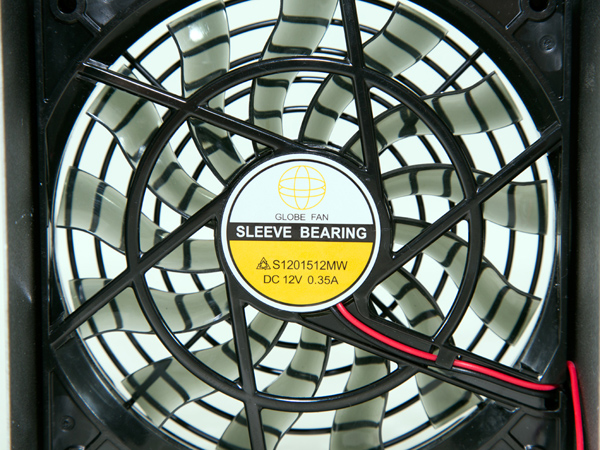SilverStone SX500-LG Power Supply Review
SilverStone's SX500-LG fits into the new SFX-L form factor. It's longer than normal SFX units, allowing for a larger fan that reduces output noise.
Why you can trust Tom's Hardware
A Look Inside And Component Analysis
Parts Description
Our main tools for disassembling PSUs are a Thermaltronics soldering and rework station, and a Hakko 808 desoldering gun.
| Primary Side | |
|---|---|
| Transient Filter | 4x Y caps, 2x X caps, 2x CM chokes, 1x MOV |
| Inrush Protection | NTC Thermistor |
| Bridge Rectifier(s) | 1x GBU1006 (600V, 10A @ 100 °C) |
| APFC MOSFETs | 2x Sigmachip SGT190N60SJ (600V, 13A @ 100 °C, 0.19mΩ) |
| APFC Boost Diode | 1x CREE C3D08060G (600V, 8A @ 152 °C) |
| Hold-up Cap(s) | 1x Rubycon (400V, 390uF, 85 °C, USG) |
| Main Switchers | 2x Infineon IPP50R190CE (550V, 63A @ 100 °C, 0.19mΩ) |
| APFC Controller | Infineon ICE3PCS01 |
| Switching Controller | Infineon ICE2HS01G |
| Topology | Primary side: Half Bridge & LLC Resonant ConverterSecondary side: Synchronous Rectification & DC-DC converters |
| Secondary Side | |
| +12V MOSFETs | 2x Infineon IPP015N04N G (40V, 120A @ 100 °C, 1.5mΩ) |
| 5V & 3.3V | DC-DC Converters: 4x IPS FTD03N03N1x APW7159 PWM Controllers |
| Filtering Capacitors | Electrolytics: Nippon Chemi-Con (105 °C, KY, KZH), AVX (10V @ 85 °C, 22uF) |
| Supervisor IC | SITI PS223 (OVP, UVP, OCP, SCP, OTP ) |
| Fan Model | Globe Fan S1201512MW (120mm, 12V, 0.35A, 1800RPM) |
| 5VSB Circuit | |
| Standby PWM Controller | STR-A6069H |


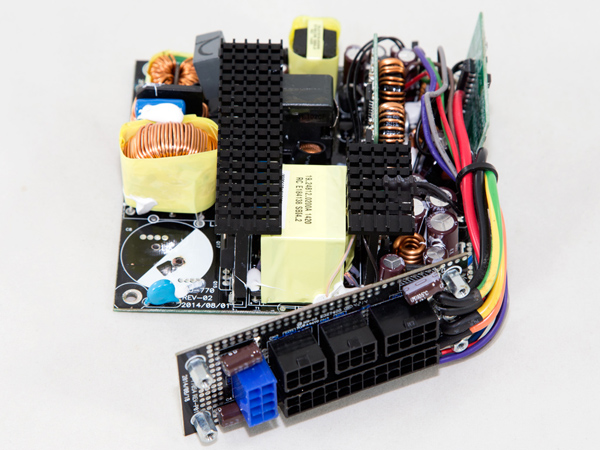

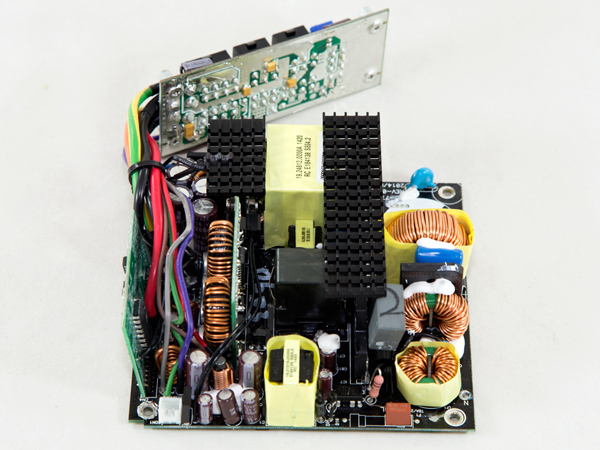
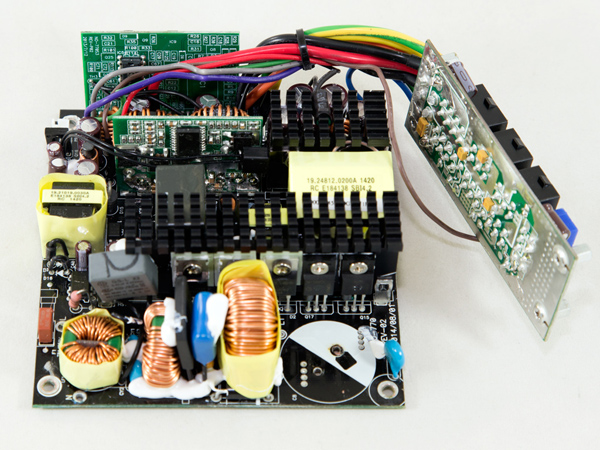
Although SilverStone has close ties with Enhance for its SFX offerings, this time the company used Sirfa/High Power as its original equipment manufacturer. This OEM has released several good platforms recently, including PSUs with digital circuits, so we are anxious to see its approach in this small form factor.
On the primary side, there is an LLC resonant converter, which is essential for higher levels of efficiency, while on the secondary side, there's a synchronous design where FETs regulate the +12V rail, along with two DC-DC converters, or voltage regulation modules (VRMs), that are used for generating the minor rails. Strangely enough, four polymer caps are used on the VRMs, while the rest are high-quality electrolytic caps.
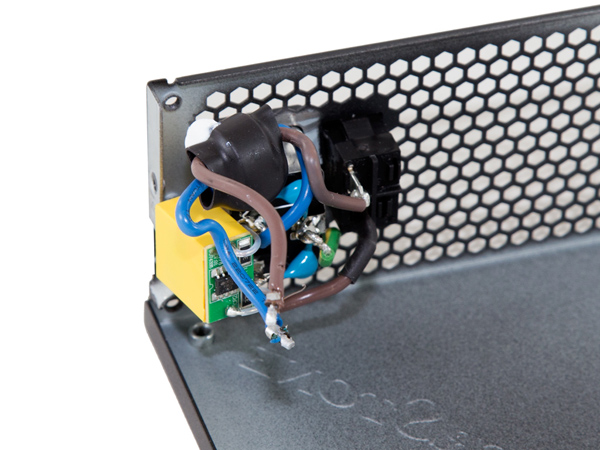





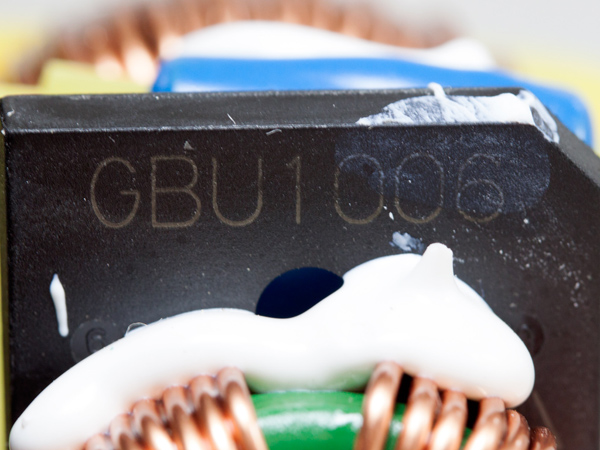


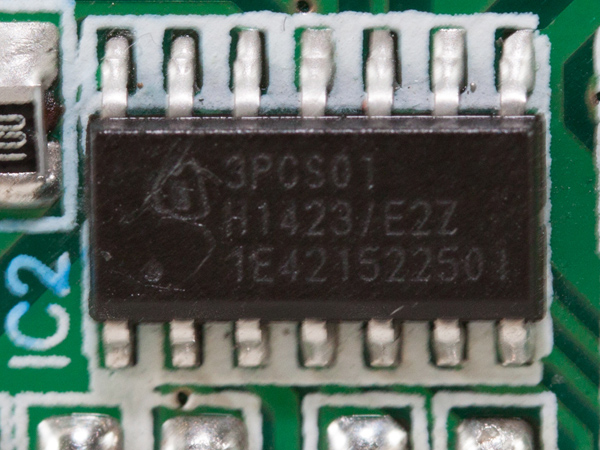
The first part of the EMI filter is located right behind the AC receptacle and consists of two Y caps and a single X cap. On the X cap, we found a CMD02X that restricts energy loss on the two SMD bleeding/discharge resistors by blocking the current when AC voltage is connected. The second part of the EMI (electromagnetic interference) filter is on the main PCB (printed circuit board) and includes two CM (common-mode) chokes, an MOV, two Y caps and a floating X cap, because there was no space on the PCB for it. Nonetheless, the X cap should be secured in place with glue, which is what we did in our sample once we put it together.
The single bridge rectifier, a GBU1006, isn’t bolted on a heat sink, but it can handle enough current—even at 100 degrees Celsius (212 degrees Fahrenheit)—to cover this unit’s needs.
In the APFC (Active Power Factor Correction) converter, two Sigmachip SGT190N60SJ are used, along with a single CREE C3D08060G boost diode. The bulk cap is provided by Rubycon (400V, 390uF, 85 degrees C, USG), and in addition to the low voltage rating, which is very close to APFC’s DC bus voltage (380 VDC), it is rated at 85 degrees C (185 degrees F) instead of 105 degrees C (221 degrees F). Rubycon is among the best capacitor manufacturers, though usually in this stage caps with higher temperature ratings are used at significantly higher cost. It's probable that Sirfa wanted to save money in this area. It shouldn't have; this isn't a budget-oriented unit. Finally, the APFC controller is an Infineon ICE3PCS01, which is installed on the solder side of the main PCB.




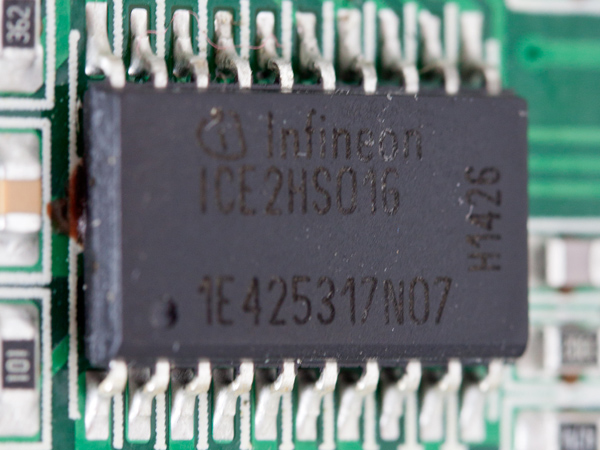



Two Infineon IPP50R190CE FETs are used as main switchers configured into a half-bridge topology and supported by an LLC resonant converter for increased efficiency. The switching controller is an Infineon ICE2HS01G IC, which is located on a vertical board on the secondary side. This controller operates in pulse frequency modulation (PFM), where, unlike in pulse width modulation (PWM), the frequency of fixed-duration pulses varies.
Get Tom's Hardware's best news and in-depth reviews, straight to your inbox.
In PWM, the duration of square pulses varies, but a constant frequency is used. In order to avoid high-frequency switching, the switching controller employs Missing Cycle Mode at light loads and Burst Mode during no-load operation. We also found the supervisor IC on the same daughterboard that houses the LLC resonant controller, a SITI PS223, which supports over-temperature protection (OTP) and a KIA358F dual op-amp amplifier.






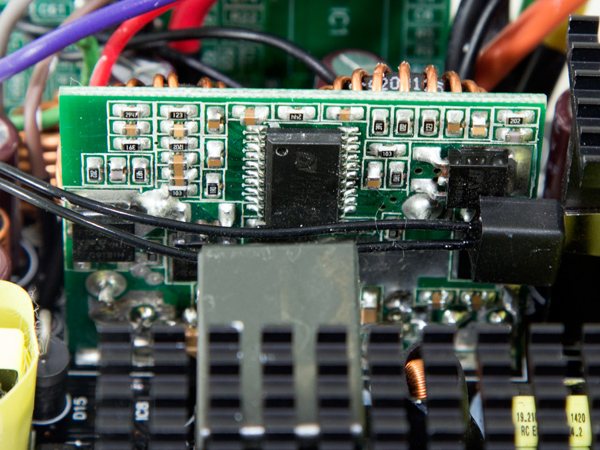

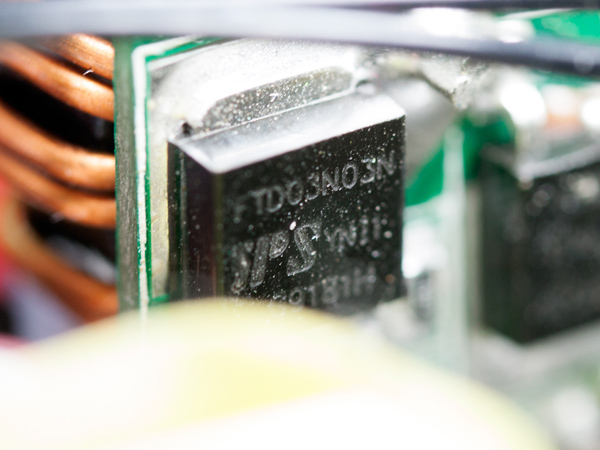
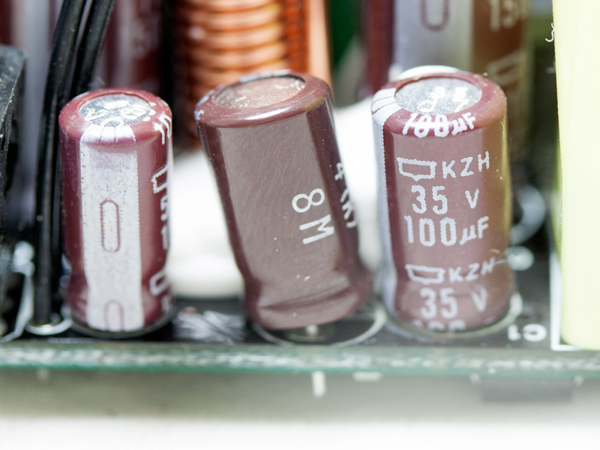


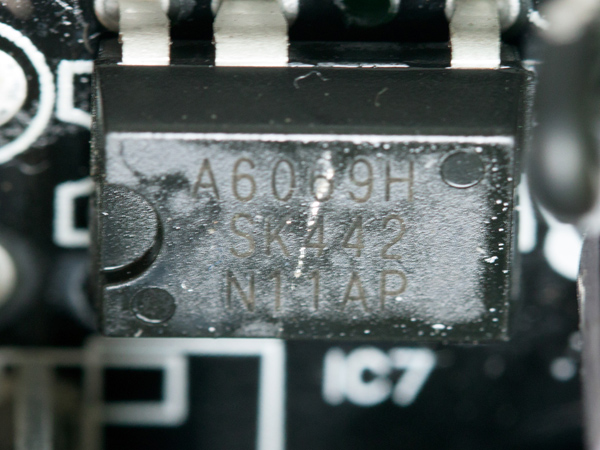
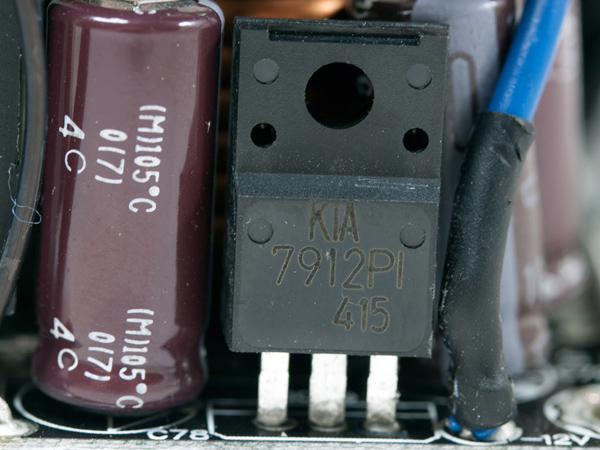
In this unit's specs, SilverStone states that this PSU doesn’t feature OTP, even though its supervisor IC supports the feature. On top of this, we noticed that two thermistors are attached to the secondary heat sink—one provides thermal data to the fan control circuit, and one is connected to the PS223 supervisor IC. This makes us think that OTP is present in this platform with a high enough threshold, as we didn’t manage to trigger it even with a full load operation at 45 degrees C (113 degrees F) ambient temperature.
A synchronous design is used on the secondary side, so the +12V rail handles FETs. In this case, a couple of Infineon IPP015N04N G FETs are used. The minor rails are handled by a couple of DC-DC converters, which are housed on the same board. Each converter uses a couple of IPS FTD03N03N FETs, and the common PWM controller is an Anpec APW7159. The converters filter their output with four polymer caps, while all of the other caps on the secondary side are electrolytic Chemi-Con caps with a 105 degrees C (221 degrees F) rating.
The standby PWM controller is a Sanken STR-A6069H, and the -12V rail is generated by a KIA7912P negative voltage regulator.

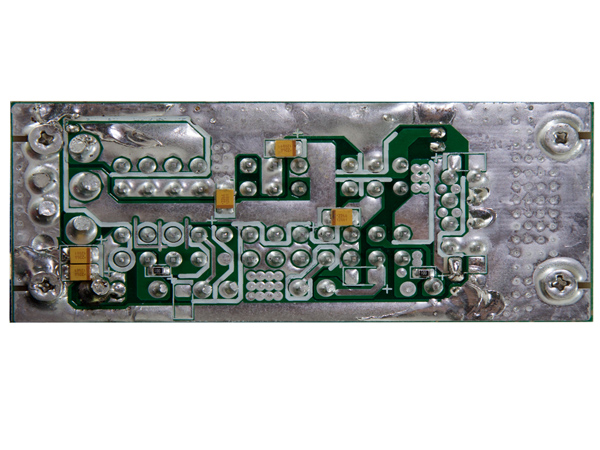




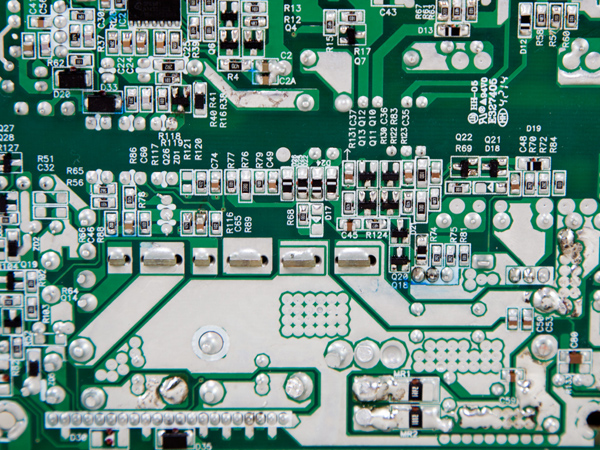
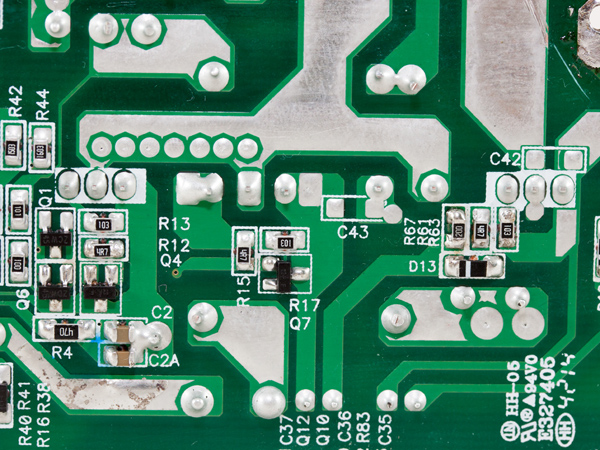
On the front of the modular PCB, three electrolytic caps by Chemi-Con provide some extra ripple filtering, and on the rear, there are five niobium oxide SMD caps. These types of caps have technical specifications similar to those of tantalum caps. However, they use more affordable materials, so their production costs are lower. Further, soldering quality on the rear of the modular PCB isn’t very good, as this board was initially designed for two +12V rails.
The soldering quality on the main PCB is better. On top of that, we didn’t notice any long component leads, which can lead to dangerous shorts. Right below the +12V island, we spotted two shunt resistors, which aren’t shorted, as is the case in single +12V rail units that were initially designed as multi +12V rail units. Because we didn’t notice any weird behavior during our overload tests, which could trigger OCP if it were present, either OCP is bypassed via another method or it is simply set at very high levels, in essence making this a single +12V rail unit.
The fan is provided by Globefan, its model number is S1201512MW (120 mm, 12 V, 0.35 A, 1800 RPM) and it uses a sleeve bearing. We would have preferred to see an FDB fan, which would last much longer. However, that would have further increased this PSU's price.
Current page: A Look Inside And Component Analysis
Prev Page Packaging, Contents, Exterior And Cabling Next Page Load Regulation, Hold-Up Time And Inrush Current
Aris Mpitziopoulos is a contributing editor at Tom's Hardware, covering PSUs.
-
Giannis Karagiannis Nice review! Indeed, the price is high but this is common with non standard ATX size PSUs. Apart from the high price it looks like a very good unit however.Reply -
PaulBags I'm waiting to see the 700w platinum version of this in review. If we can get a 700w platinum sfx-l, how long until we can get shorter and/or higher wattage fanless atx?Reply -
Aris_Mp I will ask for their 700 W model as well.Reply
As for higher wattage fanless ATX units, only with Titanium efficiency (for less energy dissipation) -
jtd871 YMMV, but there are people who have reported a galloping or chirping noise associated with this model. It's not clear if it's the fan, the thermistor that turns the fan on and off or a combination of both. Based on the ambient testing temps for this review, it might not have been noticed or noticeable. Discussion on for those wanting more info.Reply -
Aris_Mp Haven't noticed anything weird in my sample, else I would have mentioned it in the review.Reply -
Vlad Rose Still not compatible with their first generation Raven RVZ01 models. Be careful if you buy one through an online retailer as you might get back stock as Silverstone never bothered to call it a revision change..Reply -
mikelim2000 Got the same PSU, no weird sound, almost dead silent. My PC is dead silent, no case fans, only other fan is the Be Quiet! Shadow Rock LP for my cpu and that's literally dead silent.Reply
-
ThePSU Honestly....Aris no mean to offend you but you barely explain how you test these, what equipment you use, or anything. Just a bunch of oscillating graphs is not making you a confident reviewer to me. One must reveal how they come up with these numbers in detail and equipment used. Otherwise until I can myself replicate these things, your reviews are utterly useless to me.Reply -
Aris_Mp I am not easily offended no worries. There is a whole article about this. And also there are links to this article right before each new test, in all of my reviews. For me as well a reviewer that doesn't share is methodology and equipment isn't a trust worthy one.Reply
http://www.tomshardware.com/reviews/how-we-test-psu,4042.html
